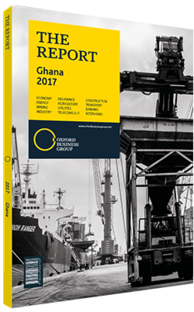Government encourages more innovation in Ghana's energy sector
Ghana’s current energy shortage and the effects of climate change on a number of sectors are driving the exploration of renewable energy use. Since the country’s electricity needs currently exceed existing supply, and electricity and gas tariffs are increasing, the government is encouraging the diversification of its energy sources, creating a number of opportunities for investment in and development of alternative energies. In its 2010-13 Medium-Term National Development Policy Framework, the government announced that it would focus on expanding non-hydrocarbons energy production and promote the wider participation of independent power producers.
In 2011 the Renewable Energy Act 832 was enacted to offer fiscal incentives for private investment. The law includes feed-in tariffs, renewable energy purchase obligations, net metering, off-grid rural electrification and the establishment of the Renewable Energy Authority. It also launched a renewable energy fund to support renewables. In 2016 the government issued 80 licences for a combined 4000 MW of generation capacity to companies investing in alternatives, and Seth Terkper, then-minister of finance and economic planning, announced in August 2016 a $230m Renewable Energy Investment Plan to expand the mini-grid sector. Ghana aims to have 10% of power demand met by renewable energy technologies – wind, solar, small hydro and biofuel – by 2020.
Hydropower
Ghana relies on a variety of energy sources, including hydropower, thermal, solar and biomass, with a total renewable installed capacity of approximately 3200 MW, according to a March 2016 report by the Netherlands Enterprise Agency (RVO). Until 1998 most of Ghana’s electricity came from hydropower. Today hydro capacity stands at 1580 MW and makes up 49% of the country’s energy mix. Ghana currently has three dams, including its first, Akosombo, which was built in the 1966 and has an installed capacity of 1020 MW, according to the Energy Commission. Two other dams have been built in the intervening years, Bui and Kpong, They have an installed capacity of 400 MW and 160 MW, respectively. Ghana also has 22 other highly promising mini-hydro locations, and at least four provisional licences have been granted to private companies to build small hydropower facilities.
Solar
Despite its abundance, solar power remains a relatively small component of energy production in Ghana. The country sees between 1800 and 3000 hours of sunlight per year and the monthly average solar irradiance falls between 4.4 and 5.6 KWh per day, according to the RVO. The Volta River Authority (VRA) runs a solar plant with an installed capacity of 2.5 MW, while Noguchi Solar maintains an installed capacity of 0.72 MW and other off-grid solar projects generate 3.8 MW. Some studies suggest solar is most promising for powering things such as homes, schools and health centres, especially in rural, off-grid areas.
Biomass
In the biomass subsector Ghana has the Juaben Oil Mills biomass plant, with a 1.2-MW capacity. According to the Forestry Commission, Ghanaians spends roughly $70m on wood to be used as a fuel source, with around 40% of households using wood and 33.7% using charcoal for cooking. While it is currently the primary energy source used for cooking in rural areas, biomass is slowly decreasing in significance and the government is actively trying to reduce its prevalence. Between 2010 and 2016 consumption fell to 39.8% from 43%, according to the RVO.
Wind
There is evidence that there is enough wind in Ghana to support energy generation. According to official data, the annual average wind speed in locations 50 metres above sea level is 8 metres per second. The most promising sites for wind power are mainly located along a narrow strip on Ghana’s eastern coastline, on top of the hills surrounding Lake Volta and along the border with Togo.
You have reached the limit of premium articles you can view for free.
Choose from the options below to purchase print or digital editions of our Reports. You can also purchase a website subscription giving you unlimited access to all of our Reports online for 12 months.
If you have already purchased this Report or have a website subscription, please login to continue.

